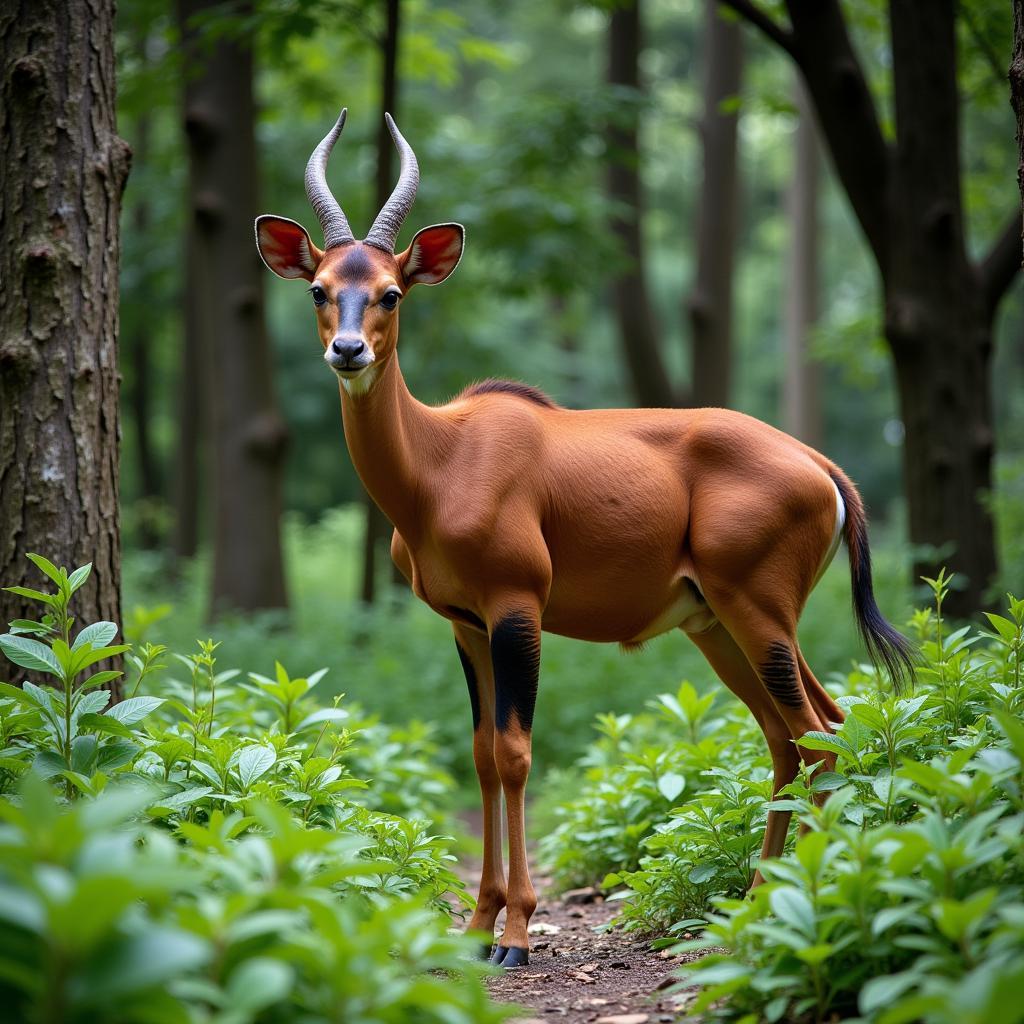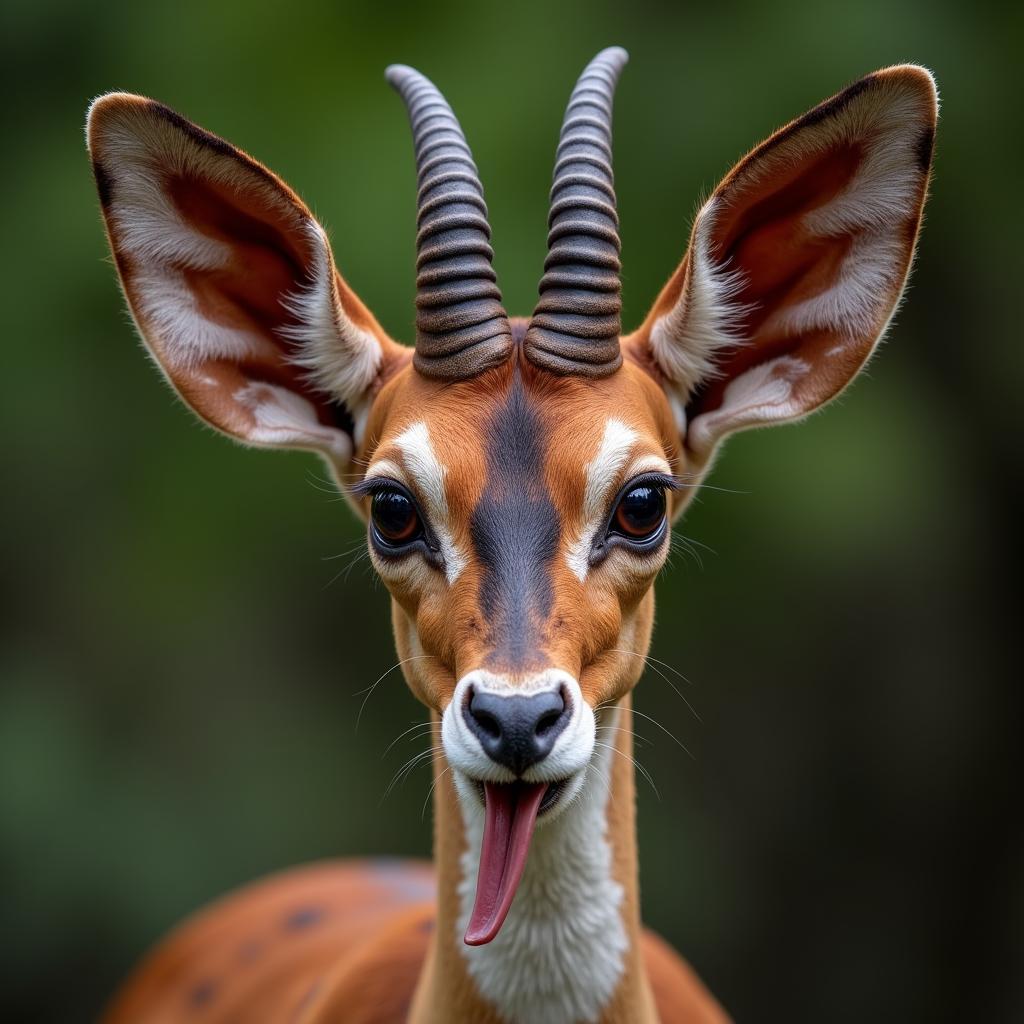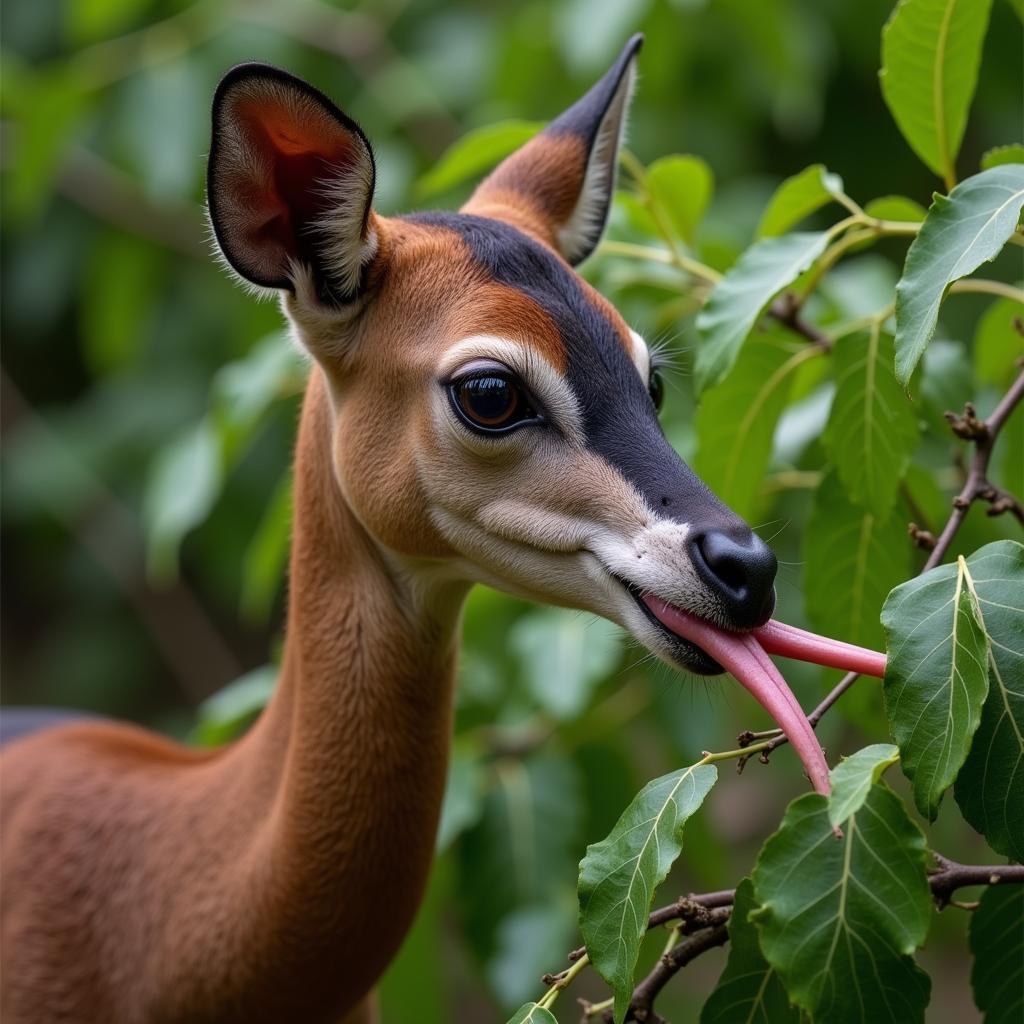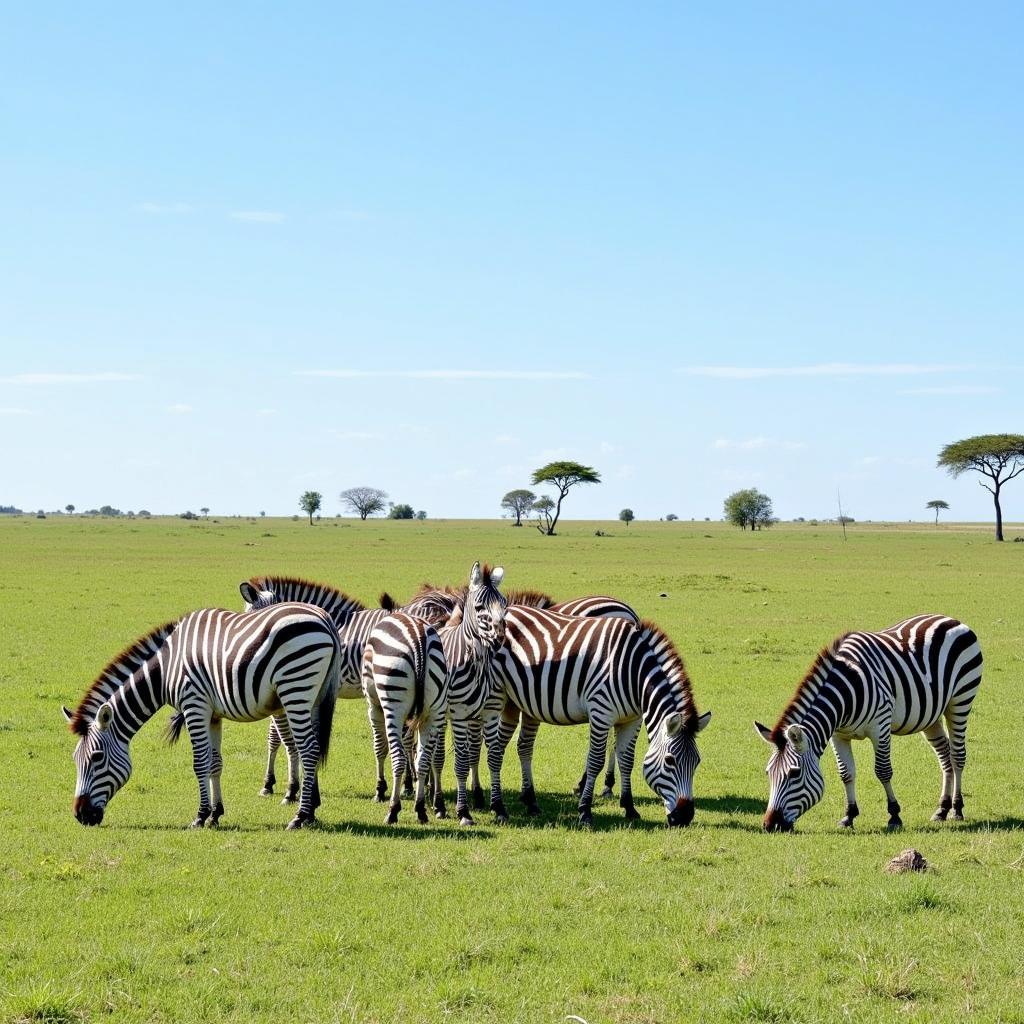The Okapi: Africa’s Forest Giraffe
The African continent is home to a diverse range of wildlife, including the elusive okapi, an animal often referred to as the “forest giraffe” or “zebra giraffe” due to its unique appearance. While it shares a common ancestor with the giraffe, the okapi has carved its own niche in the dense rainforests of Central Africa. This article delves into the fascinating world of the okapi, exploring its biology, behavior, cultural significance, and the threats it faces.
A Giraffe in Disguise: Unveiling the Okapi’s Lineage
Although the okapi’s stripes might bring to mind zebras, it is, in fact, the only living relative of the giraffe. This kinship becomes evident when observing their long necks, similar body shapes, and especially their shared feature of ossicones – horn-like structures covered in skin and fur.
 Okapi in its Natural Habitat
Okapi in its Natural Habitat
A Closer Look: Distinctive Features of the Okapi
The okapi’s appearance is a captivating blend of characteristics. The most striking feature is undoubtedly the zebra-like stripes on its hindquarters and upper legs, providing excellent camouflage in the dappled light of the rainforest. This contrasts sharply with its reddish-brown body, a characteristic more reminiscent of its giraffe relatives.
 Close-up of an Okapi
Close-up of an Okapi
Life in the Shadows: The Okapi’s Rainforest Abode
Okapis are solitary creatures, inhabiting the dense rainforests of the Democratic Republic of Congo. This habitat choice plays a crucial role in their survival. The dense vegetation offers protection from predators and provides a plentiful source of food. Their long necks, while not as pronounced as those of giraffes, still allow them to reach high into the canopy to browse on leaves, fruits, and buds.
More Than Stripes and Spots: Unique Adaptations
To thrive in their environment, okapis have developed fascinating adaptations. Their exceptional hearing helps them detect predators, while their keen sense of smell aids in finding food and potential mates. Their most remarkable feature, however, is their prehensile tongue, which can grow up to 18 inches long. This incredible adaptation allows them to strip leaves from branches and even clean their eyes and ears with impressive dexterity.
 Okapi Using its Tongue to Eat
Okapi Using its Tongue to Eat
The Elusive Icon: Okapi in African Culture
Often referred to as the “ghost of the forest,” the okapi holds a special place in the folklore and traditions of local communities in the Democratic Republic of Congo. It is seen as a symbol of good luck and prosperity by some, while others view it as a guardian spirit of the forest. Sadly, due to their elusive nature and the remoteness of their habitat, very little is known about their role in these cultures.
A Future Uncertain: Threats to the Okapi
Despite their shy nature and secluded habitat, okapis face numerous threats, primarily driven by human activities. Habitat loss due to deforestation for logging, mining, and agriculture poses a significant challenge. The illegal bushmeat trade also presents a grave danger, as does the ongoing political instability in the region, which hinders conservation efforts.
Conservation Efforts: Protecting the “Forest Giraffe”
Recognizing the plight of the okapi, several organizations are working tirelessly to protect this unique species. The Okapi Conservation Project, for instance, focuses on habitat preservation, anti-poaching patrols, and community engagement. These initiatives aim to secure a future for the okapi and ensure that generations to come can marvel at the “forest giraffe” in its natural habitat.
The Okapi: A Living Enigma
The okapi, with its striking appearance and elusive nature, stands as a testament to the incredible biodiversity of the African continent. Despite its resemblance to both giraffes and zebras, the okapi possesses a unique set of adaptations that allows it to thrive in the dense rainforests of Central Africa. As we continue to unravel the mysteries surrounding this fascinating creature, it is imperative that we prioritize its conservation and work towards securing a future where the “forest giraffe” can continue to roam free.
FAQs About Okapis
1. Where do okapis live?
Okapis are endemic to the Democratic Republic of Congo and are primarily found in the dense rainforests of the Ituri Rainforest.
2. What do okapis eat?
Okapis are herbivores and their diet consists mainly of leaves, fruits, buds, and fungi found in the rainforest understory.
3. How long do okapis live?
The average lifespan of an okapi in the wild is estimated to be between 20-30 years.
4. How tall are okapis?
An adult okapi stands at an average height of 4.9-6.6 feet tall at the shoulder.
5. Can okapis be domesticated?
Okapis are wild animals and are not suitable for domestication. They require specialized care and their conservation is best served by protecting them in their natural habitat.
You might also be interested in:
For further inquiries or assistance, please do not hesitate to contact us:
Phone Number: +255768904061
Email: kaka.mag@gmail.com
Address: Mbarali DC Mawindi, Kangaga, Tanzania
Our dedicated customer support team is available 24/7 to address your needs.



